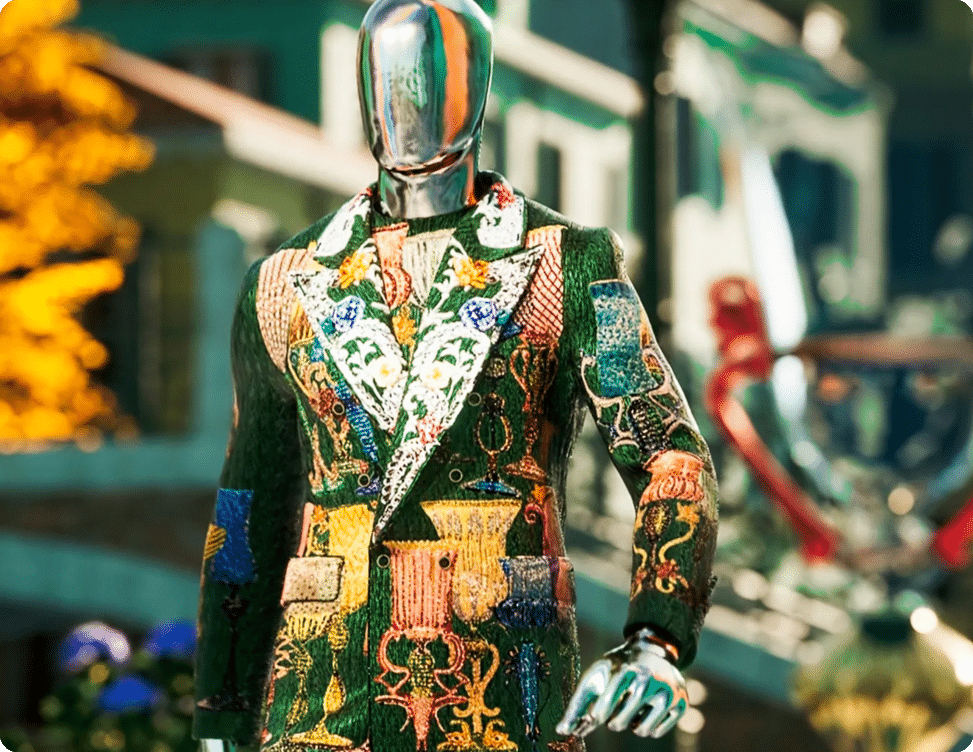
You wake up, yawn, stretch, ignore your uncle’s text messages, and open the closet. Now is the time to decide who you want to be today. Your Gucci sweater and Burberry trench coat hang neatly over a row of sheer Nike sneakers. But today you feel a little less…human…and more like a highly intelligent mollusk. You found the eight-arm hoodie you copied for this exact occasion. Today, you will be an octopus.
Welcome to Metaspace Dressing, where the daily ritual of your self-expression will be taken to its logical — and, possibly more often, insanely illogical — extremes. The internet has irrevocably changed the way we buy clothes, and social media has changed the way we wear clothes, but the advent of Web3 will completely change the way we think about fashion. In the near future, getting dressed will be more than just throwing on a shirt and trousers and going out. It will be about choosing the form you want to represent you at any given moment – human, animal, object or otherwise, and then decorating that avatar with the designer’s dream outfit, free from the confines of the physical world.

A new wave of emerging tech companies is working to shape the future of personal style in the metaverse, and more and more fashion brands are jumping into the space. Gucci partnered with gaming platform Roblox in spring 2021, debuted its NFT series in February, and bought a virtual piece of land on The Sandbox, an ethereum-based digital world, later that same month. Dolce & Gabbana netted a whopping 1,885.719 ETH (over £4 million at current exchange rates) through Collezione Genesi NFTs last September and hosted its first Metaverse Fashion Week on the Decentraland virtual world platform in March. In December, Balenciaga launched a new division dedicated to developing products and experiences for the metaverse, an effort CEO Cédric Charbit predicted would take the brand to “new levels.” Louis Vuitton, Burberry, Adidas and Ralph Lauren have all launched their own metaspace projects in recent months. And, arguably most notably, Nike announced its acquisition of RTFKT in December, putting the NFT sneaker company’s logo alongside that of its iconic major brand. Nike, Jordan, Converse.
“When I saw [Nike’s] press release, I shuddered,” said Brian Trunzo, head of metaverse at Polygon Studios, a blockchain technology firm that recently announced a partnership with the Council of Fashion Designers of America to help bring fashion brands to The realm of Web3. “You forget, not even LeBron (James, basketball superstar) is considered a full affiliate brand inside Nike, so in a subtle way they are saying RTFKT is bigger than LeBron. It validates this space”.
All of these efforts are proof that digital fashion exists, and the entire industry is fully mobilized and invested in it. But in order for the “digital apparel market to dwarf the physical apparel market,” which Trenzo predicts will happen “in the next decade or two,” some less important roadblocks need to be overcome. The first and biggest hurdle is educating the general public about what digital fashion is and why they need to care.

Bottom line, many of us have lived in the metaverse for most of our lives. “These days, I can say that our lives in the physical world are secondary to our lives,” said Bobby Kim, co-founder of Los Angeles-based streetwear brand The Hundreds. In 2021, Kim launched a fork of a very popular NFT, Adam Bomb Squad, which achieved £6 million in sales in its first week and gave owners the option to shop for exclusive physical and digital clothing for reduced prices. “Our main lives exist primarily online”. If that’s the case, Kim believes, then the way we portray ourselves online should be as important, if not more important, than the clothes we choose to wear. “At its core, fashion is a means of self-expression and identity,” says Kim. “I think we’re at an inflection point in history where we’re going to redefine what fashion means. Now, there’s no body.”
In the metaverse, you can theoretically take any shape or form you want. You can be shapeless, translucent, invisible. To put it a bit eccentrically and metaphysically, it means that fashion will soon evolve into an outer representation of our inner selves and a more authentic representation of, as King puts it, “what your soul is.”
“Some people might be identified as blue squares,” King said. “Some people might identify as a telephone pole. It sounds very crazy and stupid, and it may offend a lot of people, but just think about what it means. It’s not that these people really think they are in the physical world. A telephone pole. But for whatever reason, as art, that’s how they want to express themselves, because that says something about them.” In other words: F